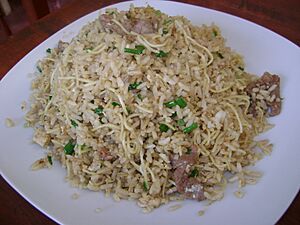Chifa facts for kids
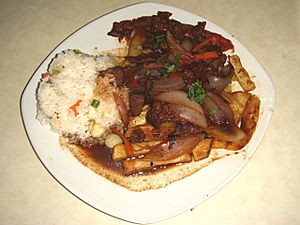
Chifa is a special type of food that mixes Chinese Cantonese cooking with traditional Peruvian ingredients and ways of cooking. Even though it started in Peru, Chifa food has become popular in nearby countries like Ecuador, Chile, and Bolivia.
Chinese people came to Peru mainly from the southern part of China, especially from the city of Guangzhou in Guangdong province. This happened in the late 1800s and early 1900s. Most of them settled along the coast of Peru and in the capital city, Lima. The word chifa also means a restaurant where this kind of food is served. Chinese-Peruvian food is now one of the most popular types of food in Peru.
The first restaurants mixing Chinese and Peruvian food opened in Lima around 1920. They were in Lima's Chinatown, called Barrio Chino. Today, there are thousands of Chifa restaurants all over Lima and in many other cities in Peru. Sometimes, you can find many Chifa restaurants close to each other on just one street!
Contents
What Does "Chifa" Mean?
The Chinese Peruvians who came to Peru were mostly from southern China, especially Canton. Experts from the Peruvian Language Academy think the word "Chifa" comes from the Cantonese phrase sik9 fan6 la3, which means "let's eat!"
Another similar word you might hear is chaufa. This is a fried rice dish. It comes from the Cantonese words caau3 faan6, which simply mean "fried rice."
How Chifa Food Started
When Chinese immigrants in Peru started to earn more money, they began to bring in some ingredients from China. This helped them make their home country's food taste more like the real thing. They also started growing different Chinese vegetables using seeds brought from China. However, it was still hard to get all the ingredients, so they couldn't always cook their food exactly as it was made in China.
Around 1920, the first Chinese-Peruvian restaurants opened in Lima. They were given the name Chifa. People from wealthy families in Lima were very impressed by the new flavors. They loved dishes like the sweet and sour sauce, chaufa rice, and different soups. Rich people in Lima became very interested in Chifa. In some parts of Peru, there are even more Chifa restaurants than traditional Peruvian restaurants!
Peruvian chefs also started using ingredients common in Chinese cooking, like ginger, soy sauce, and scallions. These ingredients soon became part of everyday cooking in Lima.
There are different stories about how Chifa restaurants grew in Lima, Peru's capital city. One story says:
"Why is the Chinatown of Lima near the central market called Capon? Because on Ucayali Street, animals like pigs and bulls were fed to make them taste better. Near Capon Street, there was a piece of land rented by a group of Chinese people who were no longer forced to work under old contracts. They did what they knew best: cooking and selling things. Capon became the birthplace of Chinese food and the first Peruvian chifas, which felt like a gift from heaven. Soon, everyone in Lima came to eat at places like Ton Kin Sen, Thon Po, Men Yut, and San Joy Lao, where there was even dancing with a live orchestra. Chinese restaurants became known as Chifa. Some say this word came from the Chinese ni chi fan, meaning "Have you eaten yet?" Soon after, the dish chau fan (fried rice) came, and finally, chaufa, a dish that comes with almost every Chifa meal."
- León, R., 2007 pp.134-136.
The story of Chifa is closely connected to the growth of the Chinatown of Lima. This area has become a very important place for culture, art, business, and especially food. Chinatown is located near Capon Street in a part of Lima called Barrios Altos, within the Historic Centre of Lima.
What is Chifa Cuisine Like?
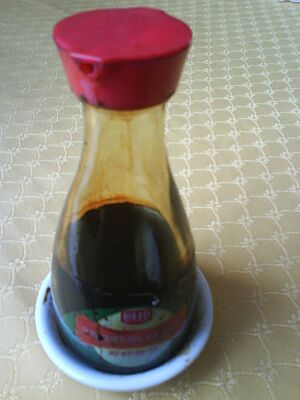
Peruvian Chifa food is special because it has influences from Peruvian cooking. Like most Chinese food around the world, and even in China, rice, meat, noodles, and vegetables are very important in Chifa.
People from all walks of life enjoy Chifa. There are fancy Chifa restaurants for those with more money to spend, and also local chifas de barrio that are more affordable. Today, in the city of Lima, there are more than 6,000 Chifa restaurants!
Popular Chifa Dishes
| Name | Image | Description |
|---|---|---|
| Arroz chaufa | This is a Cantonese-Peruvian style Fried Rice. It usually has white rice, soy sauce, scallions, fried egg, and meat like chicken or pork. | |
| Tallarin Saltado |  |
This is a Cantonese-Peruvian style Chow Mein, which means stir-fried noodles. |
| Lomo Saltado | 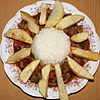 |
This dish has stir-fried strips of sirloin beef that are marinated. It's cooked with onions, tomatoes, and peppers, and served with french fries and rice. |
| Pollo Chi jau kai | This is chicken served with Chu-Hou sauce. | |
| Pollo Tipa Kay |  |
This dish features chicken with a delicious Sweet and Sour sauce. |
| Pollo enrollado |  |
This is chicken rolled into a fried crust. |
| Chicharron de pollo | These are fried chicken cubes, often served with spiced lemon juice. | |
| Pollo con tausi | This is seasoned chicken served in a dark broth. | |
| Aeropuerto | This dish is a mix of Arroz chaufa (fried rice) and Tallarin saltado (stir-fried noodles). | |
| Wantan frito |  |
These are fried wontons, which are small dumplings. |
| Sopa Wantan | 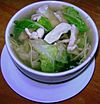 |
This is a Cantonese-Peruvian style Wonton soup. |
| Kam Lu Wantan |  |
This dish has wontons stir-fried with Sweet and sour sauce, vegetables, and meat. |
| Sopa estilo chifa | This is a Chinese-style chicken soup. | |
| Sopa Fu chi fu | This is an egg drop soup, where beaten eggs are slowly added to hot broth. | |
| Taypa a la plancha |  |
This is a stir-fry dish with beef, pork, chicken, fried tofu puffs, seafood, and vegetables. |
Chifa in Other Countries
Since the 1970s, Chinese immigrants have also opened Chifa restaurants in nearby Ecuador. You can also find Chifas in Bolivia and Chile.
See also
 In Spanish: Gastronomía chifa para niños
In Spanish: Gastronomía chifa para niños


